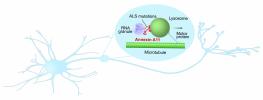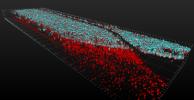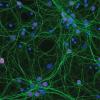Scientists have developed a brain-computer interface (BCI) designed to restore the ability to communicate in people with spinal cord injuries and neurological disorders such as amyotrophic lateral sclerosis (ALS).
Press Releases


A study led by researchers at the National Institutes of Health has made a surprising connection between frontotemporal dementia (FTD) and amyotrophic lateral sclerosis (ALS), two disorders of the nervous system, and the genetic mutation normally understood to cause Huntington’s disease.

For every cell in the body there comes a time when it must decide what it wants to do for the rest of its life. In an article published in the journal PNAS, NIH researchers report for the first time that ancient viral genes that were once considered “junk DNA” may play a role in this process.

The National Institutes of Health plans to invest $25 million over 5 years in a new program to spur innovative research on amyotrophic lateral sclerosis (ALS), a progressive and fatal neurological disease that weakens and eventually paralyzes voluntary muscles.

Affecting at least 14,000 Americans, amyotrophic lateral sclerosis (ALS) is a paralyzing and highly fatal neurodegenerative disorder for which there are no effective treatments. Scientists peered inside neurons and watched the workings of annexin A11, a gene linked to a rare form of ALS.





